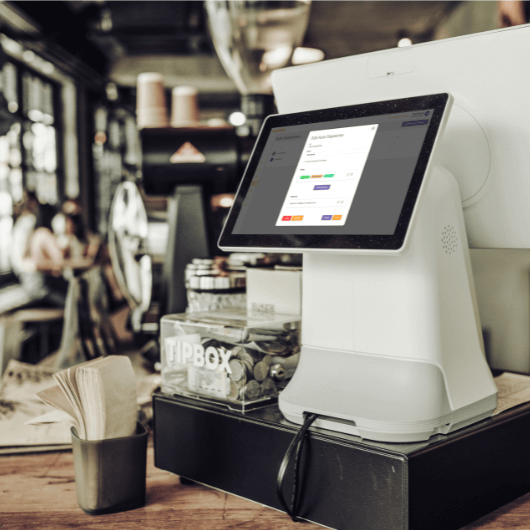
5 reasons 3PD want to work with your delivery team
February 24, 2023
Learn more about the pitfalls of the gig economy and how delivery service drivers can help to the solve the problems.

As the restaurant delivery service industry continues to grow, so too does the issue of managing the ever-expanding food delivery driver workforce.
Right now in the United States, there are tens of thousands of gig economy delivery service drivers working in poor conditions for marketplace brands and food delivery businesses.
To become a valid driver, one must pass a background check. But due to many drivers not having a valid working visa, they are forced to rent a profile from others, reducing their potential income and their ability to earn some extra cash.
As a 1099 delivery agent, delivery drivers are working as contractors, not as employees, and as a result are offered no additional benefits.
Many also do not have commercial vehicle insurance because they cannot afford the blanket cover for the year.
While our integration with Zego, offers on-demand commercial insurance (which is a fraction of the cost of an annual policy!) we’re also aware of the importance of urging the government to provide more support and control to both restaurants and delivery businesses within the sector.
The following article will outline the major issues associated with the gig economy industry, the consequences restaurant businesses face as a result. We’ll also discuss how the helping hand of a government body as well as employing your own restaurant delivery drivers can help to solve the pitfalls of the gig economy.
The gig economy, while offering flexible hours and convenience for workers, brings along a range of issues.
One major concern is the lack of employment benefits and protections.
As independent contractors, gig workers often miss out on crucial benefits like health insurance, sick leave, and retirement plans. This absence of a safety net can leave them vulnerable during times of illness or financial hardship.
Additionally, the gig economy fosters an environment of uncertainty, with fluctuating incomes and inconsistent work schedules. This can make it difficult for delivery service drivers to plan their finances and maintain stability in their lives.
Another issue is the potential for exploitation by companies, as gig workers may face low wages and poor working conditions.
With intense competition and the pressure to maximize efficiency, there is often little room for negotiation or fair compensation.
Furthermore, gig workers may lack job security, facing the risk of sudden deactivation or termination without warning or recourse.
These types of pressures can often lead to a shortage of delivery drivers, often passing the pressures onto the restaurant whose delivery service depends on third-party delivery.

Restaurants are often faced with several challenges as a result of using gig economy drivers.
One such difficulty is maintaining a stable workforce.
In the gig economy, delivery drivers may work for multiple platforms simultaneously, leading to high turnover rates and a lack of consistency in staffing.
This can make it challenging for restaurants to rely on a dependable fleet of drivers for their delivery services.
To mitigate these problems, restaurants must find ways to strike a balance between leveraging the benefits of the gig economy, such as increased reach and convenience, while also exploring alternative delivery models such as hiring their own fleet of drivers or using a hybrid delivery model.

One potential solution that could solve the issues of the gig economy would be for government bodies to incentivize restaurants to hire gig economy workers as direct, full-time employees.
By exploring the potential of equipping restaurants with hiring grants or reduced insurance coverage would mean they would be more capable of directly hiring delivery drivers.
This would not only solve the visa issue we previously mentioned, but it would also help to ensure adequate insurance policies were in place as well as improve delivery operations overall due to greater visibility over deliveries.
While hiring an internal fleet of drivers may limit a restaurant’s delivery locations, it can certainly help to drive down the costs associated with third-party delivery fees. As well as this, hiring an internal fleet can improve the customer experience by giving them more control and visibility around delivery orders.
However, if you are a restaurant operator still unsure about hiring delivery drivers, check out our eBook on how to do self-delivery without hiring any drivers!

The adoption of technology solutions such as food delivery software within the restaurant sector is 10-fold.
Did you know that almost 50% of operators plan to deploy some sort of automation tech in the next 2 to 3 years?
Restaurant operators are realizing the importance of adopting restaurant-focused technology solutions in order to improve their customer’s experiences when it comes to both in-house dining and the delivery process.
Not only does jumping on board with technology give restaurants that competitive edge, but it also helps them to better manage their deliveries by reducing the time it takes to deliver and the costs associated.

With the significant surge in the demand for home delivery and food delivery apps, governments and restaurants alike have started to recognize the importance of technology for better restaurant management.
As we previously mentioned, technology can help restaurants to reduce costs, increase delivery route efficiency and provide the end customer with first-class customer service, but many restaurants are hesitant to invest in new technology due to upfront or hidden costs.
To encourage more restaurants to make the switch and reduce the financial burden of tech adoption, governments can provide better financial incentives for restaurants in the form of grants or tax breaks.
They can also advise them on how to choose the best technology solution for their restaurant business.

In addition, governments can provide training and support resources to restaurant owners and staff to help them understand how to use new technologies effectively.
This can include workshops and/or working with tech companies who can supply the right online resources to get the restaurant’s operations off the ground.
Restaurants are overwhelmed by the sheer amount of technology available to them.
From incorporating point-of-sale systems with online ordering platforms, implementing order aggregators to consolidate orders, AND using delivery management software, it is no surprise that restaurants are not eager on implementing yet another technology solution to their operations.
Not to mention the rise of AI technology. But that’s for another day…

In conclusion, by campaigning for government help and introducing an internal fleet of drivers to its operations, restaurants can avoid the pitfalls associated with the gig economy.
Remember, although it can be difficult, there is a lot to gain from hiring a first-party fleet of drivers.
Restaurants can actually avoid the additional 15% delivery charge when using marketplace apps by hiring their own drivers and managing the process much more effectively – resulting in happier drivers and increased customer satisfaction.
If you’re interested in learning more about self-delivery and how it can ensure a return on investment for your restaurant, book a demo with our team today!
Read more about the restaurant delivery industry below!

February 24, 2023

March 30, 2023

October 27, 2022